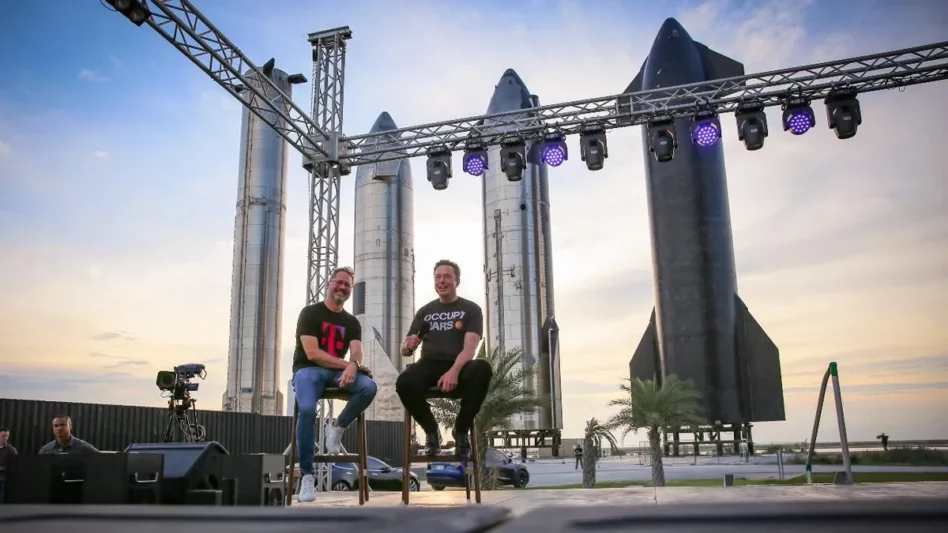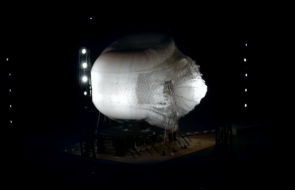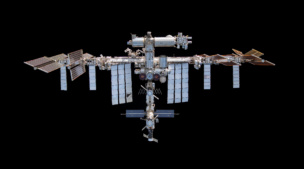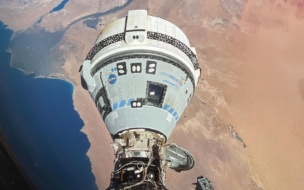ICYMI, and you probably didn’t, SpaceX and T-Mobile have teamed up to bring satellite-to-smartphone connectivity to mobile networks. SpaceX is working on connecting existing, unmodified phones to a new type of mobile network.
Big, if true
This technology could blanket the globe with a new layer of cellular connectivity. And the tie-up has the potential to eliminate cell “dead zones” in and around the US, SpaceX chief engineer/executive Elon Musk said Thursday.
Musk spoke on stage at Starbase alongside T-Mobile CEO Mike Sievert, who commented that the US has over 500,000 square miles of cell dead zones.
- Working with Starlink is “a lot like putting a cellular tower in the sky, just a lot harder,” Sievert said.
- Starlink V2 sats will be fitted with 269 square-foot antennas to support the capability.
- They’ll be “extremely advanced, because they’ve got to pick up a very quiet signal from your cell phone and then be caught by a satellite that’s traveling 17,000 [mph],” Musk said.
NB
This partnership, for now, doesn’t include broadband. The companies are starting small with messaging services and may later expand to voice.
- The initial service will splice coverage areas into large cell zones. Each zone’s connectivity will be rate-limited at ~2–4 megabytes.
- What that means: Each cell could support millions of text messages (or 1,000-2,000 voice calls).
- Therefore, users shouldn’t expect broadband-type services (so, no HD video streaming or on-the-go Zoom calls, at least to start).
For the reasons listed above, this technology should be thought of as connectivity that will be tapped as a last resort, rather than a stand-in for today’s terrestrial networks.
NB, pt. II
This is a tech partnership, not a product launch, Sievert noted. T-Mobile and SpaceX need to work with major messaging providers (Apple’s iMessage, Android, etc.) to iron out how exactly their technology would work on the network.
The timeline: The companies say they’ll kick off tests in remote, rural parts of the US by the end of 2023. Beta service could also begin next year.
The competition
AST SpaceMobile ($ASTS) is preparing to launch its test BlueWalker 3 satellite in the coming weeks on a Falcon 9. The Midland, TX-based satellite operator aims to provide 4G LTE and 5G cellular connectivity from satellites to today’s unmodified smartphones. AST SpaceMobile CEO Abel Avellan commented that the T-Mobile/SpaceX announcement helped, not hurt, his company’s prospects. $ASTS traded up 5.79% on Friday.
Separately, Lynk Global is building a “cell tower in space” constellation and currently has six satellites in orbit. The company has successfully demonstrated satellite-to-phone connections on thousands of devices, along with two-way links with tablets, smart devices, trucks, and tractors.
- Recently, the startup also won Mercedes Benz’s car2space challenge, showing the technology’s promise for the automated, computerized, and electrified future of the auto industry.
Lynk has signed contracts with 14 mobile network operators (MNOs) in 35 countries. The Virginia company tells Payload that it’s actively testing its space-based service in 10 separate markets (and three continents), and will enter commercial service this year. For more, check out our October Q+A with Lynk CEO Charles Miller.
Finally, Verizon and Project Kuiper have teamed up in an arrangement that will see Amazon’s LEO constellation providing cellular backhaul connectivity to the US telco’s terrestrial 4G LTE and 5G networks.
- T-Mobile is the US’ second largest carrier by subscribers, with 109.5M active SIM cards vs. Verizon’s 143M.
- The Washington-based telco leapfrogged AT&T after tying the knot with Sprint. (T-Mobile and Sprint closed their merger back in April 2020.)
- SpaceX and T-Mobile’s partnership could eventually extend to backhaul services, but doesn’t for now.
+ Idle speculation: Apple is promoting its next iPhone event, taking place next Wednesday, with the “far out” tagline. Apple’s promo tweet looks and sounds…pretty spacey. See below.
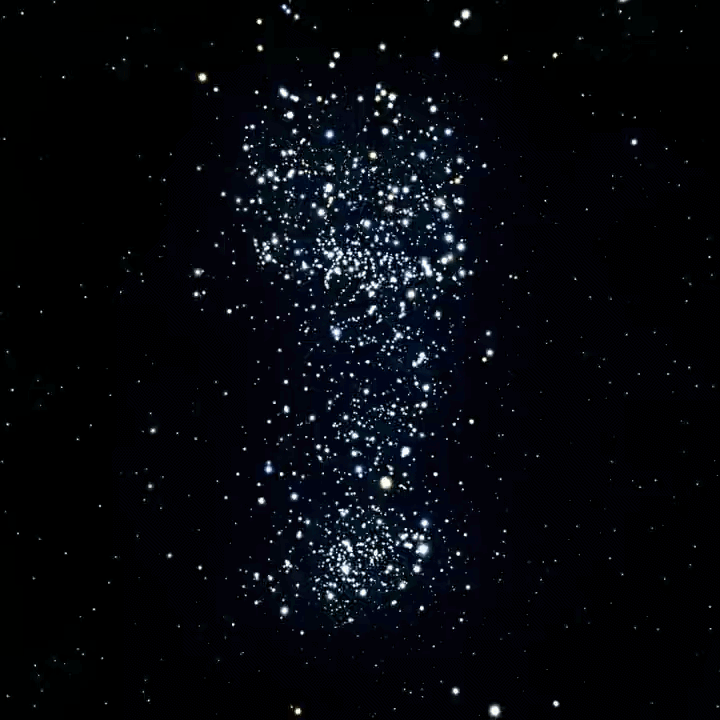
The rumor mill is buzzing with talk that Apple will announce satellite connectivity for the iPhone 14 next week. Analysts and Apple watchers believe iPhones will connect to Globalstar satellites for emergency purposes. And in February, Globalstar said it had procured 17 new satellites to offer continuous satellite services to an unnamed “potential customer.” Stay tuned…
